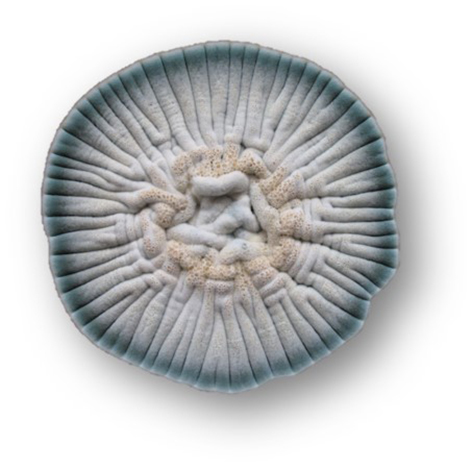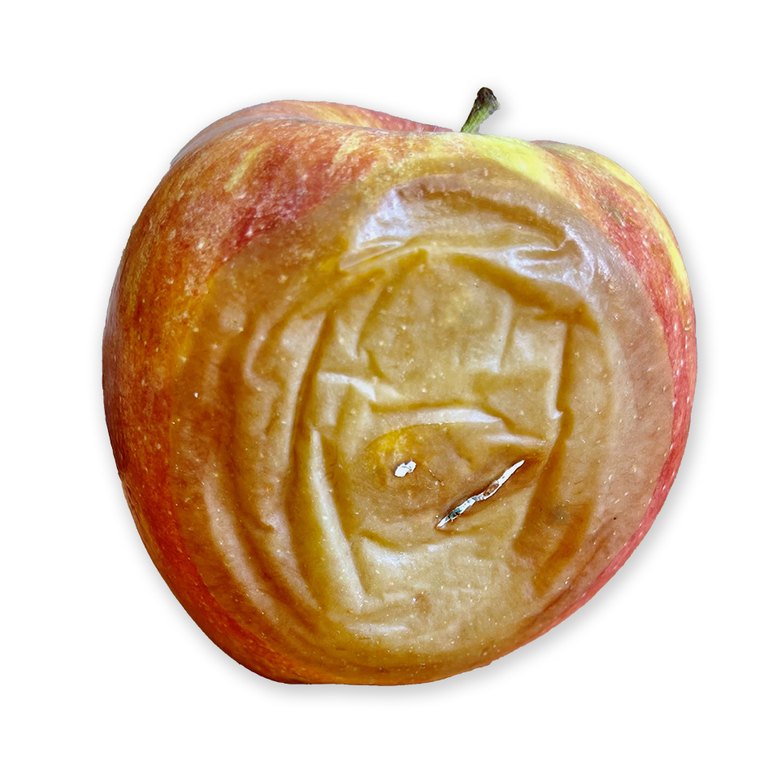Penicillium fungi on food
Genomics to characterize mycotoxin formation
Infestation of plant products with fungi of the genus Penicillium often leads to their spoilage. In addition, many fungal species of this genus are capable of forming various toxins (mycotoxins). These include citrinin, ochratoxin and patulin (Figure 1). Citrinin is a kidney-damaging mycotoxin that can be found in products such as cereals, rice, nuts, spices, fruits, and thus fruit juices. In the case of cereals, citrinin is often found together with ochratoxin, which can damage both the kidneys and the liver. Both toxins are produced by Penicillium verrucosum. In fruits and fruit products, especially apples, citrinin can also occur alongside patulin, which is a cell toxin that interferes with the respiratory chain. A fungus capable of forming patulin and citrinin and frequently found on apples and pears is Penicillium expansum. On nuts, olives and spices, Penicillium citrinum is probably responsible for the formation of citrinin.
In contrast to ochratoxin and patulin, very little is known about the occurrence and formation of citrinin in plant products, as also outlined in an EFSA position paper (European Food Safety Authority, 2012). Since an understanding of the cellular regulation of citrinin formation in the product is essential for the development of effective avoidance strategies, the Department of Safety and Quality of Fruit and Vegetables is researching the biological basis of citrinin formation in the genus Penicillium.
It was shown that the regulation of citrinin formation is completely different in the three species mentioned above: In P. verrucosum, citrinin and ochratoxin formation are related and often regulated in opposite directions. In P. expansum, the formation of patulin and citrinin are probably not coupled to each other, but may formed in different time periods. In P. citrinum, citrinin formation appears to be the least stringently regulated. This species can generally form a great amount of citrinin.
The molecular mechanisms of the regulation of citrinin formation in the three species are being elucidated at the Max Rubner-Institut. For this purpose, the genomes of P. verrucosum and P. citrinum, among others, were sequenced (the genome sequence of P. expansum has already been published by other research groups). Comprehensive genome analyses of these two fungal species in comparison to P. expansum and Monascus purpureus - the fungal species in which citrinin formation was first studied - show a very high structural similarity of the citrinin biosynthetic gene clusters (Figure 2). This can be an indication for a possible horizontal gene transfer (HGT) of the citrinin gene cluster within this species. Similar findings have been described in isolated cases for other fungal species.
And: Similar analyses are currently being carried out with the gene cluster for aflatoxin biosynthesis, which occurs in various Aspergillus species that produce the highly toxic mycotoxin aflatoxin (see also AflaZ project).



